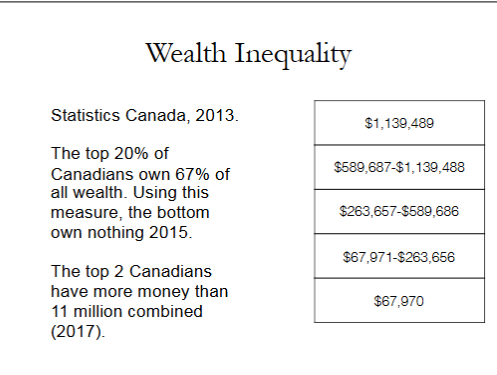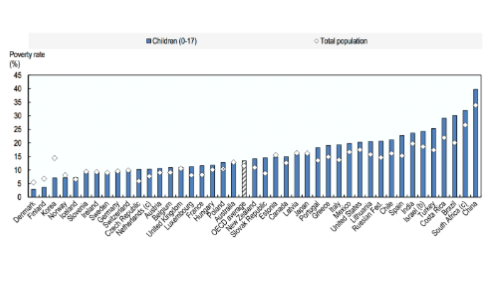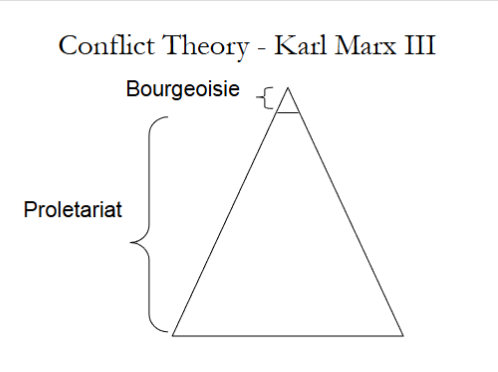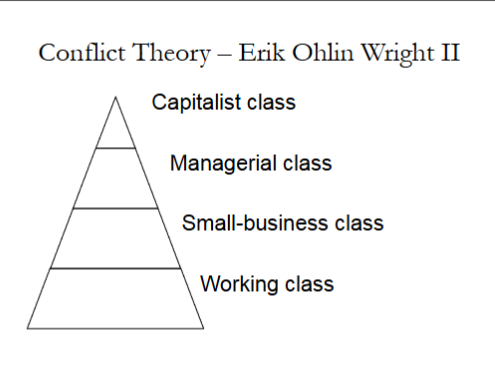SOCI 201 Midterm 2 - UofC
1/127
There's no tags or description
Looks like no tags are added yet.
Name | Mastery | Learn | Test | Matching | Spaced |
|---|
No study sessions yet.
128 Terms
CHAPTER 5: CULTURE
Culture
Knowledge, language, values, customs, and material objects passed to others over time that help us to deal with real-life problems
What are two types of culture? (2)
Material Culture (artifacts, physical objects)
Non-Material Culture (values, beliefs, traditions, etc)
Features of Culture (5)
Culture is learned (values)
Culture is shared (i.e. symbols, hockey)
Culture is transmitted (intergenerational)
Culture is cumulative (sum total of all ideas/practices/objects)
Culture is human (distinguishes us from animals)
Cultural Survival Kits (3)
Abstraction
Cooperation
Production
Abstraction
The ability to use symbols such as language
Cooperation
The ability to construct norms and laws
Production
Using tools and techniques used to take and create what we want
Building Blocks of Culture (4)
Values
Norms
Laws
Sanctions
Values
General beliefs of right and wrong
Norms
Specification of appropriate behavior
Laws
Codified norms (formal rules set by law)
Sanctions
Rewards and punishments
Who classified norms into Folkways and Mores?
William Graham Sumner
Folkways
Customary behaviors that guide everyday social interactions but do not have strong moral significance (i.e. casual clothes at a formal event)
Mores
Norms that carry serious moral significance, and violating them can result in strong social condemnation or legal consequences (i.e. stealing)
Cultural Relativism
The idea that all cultures have intrinsic worth and should be understood on their own terms rather than judged by external standards (open-mindedness, tolerance)
Ethnocentrism
The idea that one's own culture is superior to others (one is “correct”)
Culture as a Continuum
The continuum suggests that cultures and individuals may fall anywhere between ethnocentrism & cultural relativism (not bound to one perspective)
What are the "twin faces of culture"? (2)
Culture provides freedom (more choice)
Culture constrains us (limitations on behavior)
Twin Faces of Culture: Freedom (4)
Multiculturalism: provides minorities with rights
Globalization: increased trade, communication, production
Rights Revolution
Post-Modernism
Rights Revolution
1948 Universal Declaration of Human Rights. It was compensation for past injustices
Post-Modernism in Culture
A mix of ideas from different times and places (eclectic mixing), less respect for traditional leaders (erosion of authority), and fewer shared beliefs (decline in consensus on core values)
Twin Faces of Culture: Constraints (2)
Rationalization
Consumerism
Rationalization (2)
The focus on efficiency, predictability, and control in society, often reducing human creativity and spontaneity
The Werkglocken & McDonaldization
The Werkglocken
Reference to time discipline in industrial workplaces, where workers' schedules are strictly controlled by clocks
McDonaldization
The application of fast-food principles (efficiency, standardization, automation) to other areas of life (i.e. self-checkout machines replacing human cashiers)
Consumerism
The idea that people’s value is tied to what they buy rather than who they are
What does “It’s not the steak we sell, it’s the sizzle” mean in terms of consumerism?
This marketing phrase means that businesses sell the experience or image of a product rather than the product itself
The Nag Factor
A marketing strategy where companies target children to pressure their parents into buying products (i.e. ads designed to make kids beg for toys)
Sapir-Whorf Hypothesis (2)
The Sapir-Whorf hypothesis suggests that our language determines our thought
Language is a symbolic system that helps transmit culture. If a language is lost, culture may be at risk
What example does Kendall (2008) give for the Sapir-Whorf Hypothesis?
In Lesotho, they do not have any “lesbians” per se, as there is no such reference in their vocabulary
How do women use language differently than men?
Women use more modifiers and tag questions (i.e. “That’s nice, isn’t it?”) and have a wider vocabulary for colors, textures, food, clothing, cooking, and parenting
How do men use language differently than women?
Men use the imperative form (direct commands) and expletives (swearing) more often
How do men and women differ in emotional disclosure?
Women are more likely to share aspects of their personal lives and emotions, while men are often less comfortable doing so
Who talks more at the beginning of a male-female relationship?
Men tend to talk more than women at the start of a relationship, but this often decreases over time
Subculture
A group in society with distinct values, norms, folkways, and mores but still part of the dominant culture (i.e. gamers, skaters, K-Pop fans)
Counterculture
A subculture that actively opposes the dominant culture’s norms and values (i.e. punk rock movements, hippies, anarchists)
Culture is what makes us _________
human
CHAPTER 6: SOCIAL STRATIFICATION I
What are the three emotional reactions to social class according to Nancy Davis? (3)
Resistance (opposing inequality)
Paralysis (feeling stuck)
Rage (anger at unfairness)
Income
Economic gain from wages, salaries, or government transfers (i.e. pensions, employment insurance, etc.)
Wealth
The total value of accumulated assets like land, houses, businesses, and investments.
Net Worth
A person’s net worth is the difference between all debts and assets (net worth = total assets - total debts)
What does the income decile chart show?
It shows income inequality in Canada—top 10% earn much more than the bottom 10%

Why does Statistics Canada use median income instead of mean?
Median is less affected by extreme wealth, while the mean would be lower due to poverty
Wealth Inequality (Statistics Canada)
The top 20% of Canadians own 67% of all wealth. Using this measure, the bottom own effectively nothing

In 2017, the top 2 richest Canadians had more money than _____________________ combined
11 million people
Child Poverty (3)
1.2 million children live in poverty (2016)
50% (60% on reserves) of First Nations children live in poverty
15% are non-Indigenous children
What does the global child poverty chart show?
Canada has a higher child poverty rate than many developed countries, but lower than some developing nations

How does Christopher Sarlo (economist) define true poverty?
"Stomach stretching poverty"—a severe lack of basic necessities (food, shelter, clothing)
What does Sarlo argue about poverty in Canada?
He believes poverty is exaggerated, as many "poor" people still have middle-class amenities (i.e. TVs, coffee, jam)
What is absolute poverty?
The inability to meet basic necessities of life (e.g., food, shelter, clothing). Measured by Basic Needs Measure
What is relative poverty?
The inability to maintain an average standard of living compared to others, considered deprived relative to others (measured by LICO – Low-Income Cut-Off)
Consequences of Relative Poverty (7)
Delayed vocabulary development
Poor health and hygiene
Poor nutrition
Absenteeism and low scholastic achievement
Behavioral and mental problems (crime/deviance)
Low housing standards
Greater likelihood of being poor in adulthood
What groups are at higher risk of poverty in Canada? (5)
Single-parent households (especially female-led)
Children and young adults
Women (especially single mothers)
Indigenous and racialized groups
Persons with disabilities
What percentage of single-parent females under 25 were considered poor in 2003?
74%
Why are women more likely to experience poverty?
Due to wage gaps, childcare responsibilities, and systemic inequality
How does disability increase poverty risk?
Limited employment opportunities and higher healthcare costs make financial stability harder
Why is there no official poverty rate in Canada?
There is no set definition of poverty, so relative income inequality is used as a proxy (substitute) instead
CHAPTER 6: SOCIAL STRATIFICATION II
Social Stratification
Refers to how society ranks people based on factors like wealth, power, and status
Social Stratification: Open System
Allows social mobility, meaning individuals can move up or down the social hierarchy based on merit
Social Stratification: Closed System
Little to no mobility, social status is fixed at birth
Meritocracy
A system where social status and success are based on individual talent, effort, and ability, rather than class or privilege (i.e. education and job promotions based on skills and performance)
Ascribed Status
Status given at birth and not based on personal achievements (i.e. race, gender, royalty)
Achieved Status
Status earned through personal effort and actions (i.e. becoming a doctor)
Explanations for Inequality (4)
Structural Functionalism
Conflict Approaches
Feminisms
Symbolic Interactionalism
Structural Functionalism: Davis & Moore (3)
We live in a meritocracy
Society is held together by consensus; not conflict
Inequality is necessary and eliminating it would be harmful because important jobs require greater rewards (i.e. doctors vs. janitors)
Conflict Theory: Karl Marx (2)
Bourgeoisie: haves, owns means of production, exploits workers
Proletariat: have-nots, sells labor, exploited

What is surplus value according to Marx?
The extra value created by workers but taken by the bourgeoisie as profit
What is alienation in Marx’s theory?
Workers feel disconnected from their work, the products they make, and other workers
What is Marx’s Law of Accumulation?
Suggests that as the bourgeoisie obtains more wealth, the proletariat will eventually have no money to purchase products, and the system collapses (i.e. the rich get richer)
Conflict Theory: Erik Ohlin Wright (4)
He identifies four social classes:
Capitalist Class: owns production, controls labor (i.e. business/factory owners)
Managerial Class: controls labor but doesn’t own production (i.e. has employees)
Small-Business Class: owns a business, may still work (i.e. hiring workers)
Working Class: sells labor, no control over production (i.e. working for wages)

Conflict Theory: Max Weber (4)
One factor cannot explain social stratification
We should take a multidimensional approach to social stratification including class, status, and party
Society will be increasingly controlled by bureaucrats
Inequality will continue
What are bureaucrats?
Government or corporate officials who make and enforce rules in a structured organization (i.e. civil servants, policymakers, company managers)
How does bureaucracy impact society, according to Weber?
Society will be increasingly controlled by bureaucrats, limiting individual freedom
What does Weber say about inequality?
Inequality will continue because wealth, status, and power create a rigid social hierarchy
What does Liberal Feminism focus on?
Legal and policy reforms to ensure equal rights within the existing system
What does Radical Feminism believe?
Patriarchy (male dominance) is the root cause of women’s oppression and must be eliminated
How does Socialist Feminism explain gender inequality?
Women are oppressed by both capitalism and patriarchy (Dual Systems Theory), and they both must be eliminated to achieve gender equality
What does Postmodern Feminism criticize?
It challenges the idea of a universal female experience and focuses on identity and intersectionality
Symbolic Interactionism
Focused on micro-level interactions—how individuals experience and interpret social life
How does Symbolic Interactionism study poverty?
It looks at how people experience poverty, including stigma, identity, and social interactions
Erving Goffman
A sociologist who studied how people manage their identity in social situations (Symbolic Interactionism)
Deference
The way people show respect or submission to others based on social status
CHAPTER 7: RACE & ETHNICITY I
Stereotype
An oversimplified and exaggerated belief about a social group (i.e. all Asians are good at math)
Prejudice
Unfavorable, generalized, and rigid beliefs about all members of a group
Discrimination
Actions that deny a group equal access to opportunities and rights (i.e. refusal to serve someone because they are ethnic)
How does racism differ from prejudice?
Racism is the combination of prejudice and discrimination, enforcing systemic inequality
Lucius Outlaw: “Toward a Critical Theory of Race” (4)
Race is a social construct, not a biological category
The origins of the term “race” are unclear - it may come from Arabic, Latin, or German
First used in English in 1508 in a poem by William Dunbar
Initially, it referred to a class of persons/things, but in the 19th-20th centuries, it became linked to biological distinctions
Did the concept of "race" begin with science?
No, race predates (existed before) science and was later used to justify biological differences
What did Darwin suggest about genetics?
Genetics determine whether species can adapt to environmental changes
What did Mendel’s research reveal about inheritance?
Traits do not pass as fixed packages but are shuffled like a deck of cards (we are not a clone of our parents)
Why is race not a meaningful biological category?
It is a social construct, meaning biological traits exist, but their importance is defined by society, culture, and history (interpreted by others)
Why is race considered a social construct? (3)
“Racial” classifications are arbitrary
Genetic differences between groups are small
Genetic differences are behaviourally insignificant (do not determine behavior)
What is the Thomas Theorem and what does it mean? (2)
“If people define situations as real, they are real in their consequences.”
This means that even if a belief is false, it can shape actions and societal outcomes if enough people believe it
How does the Thomas Theorem relate to race?
Even though race is a social construct, belief in racial differences leads to real consequences like discrimination
Interpersonal Racism (definition + 3 types)
Racism in daily and direct interactions, based on beliefs about race
Hate racism: Open hostility (i.e. racial slurs)
Polite racism: Subtle or disguised racism in conversation (i.e. "I’m not racist, but…")
Subliminal racism: Unconscious biases that influence behavior (i.e. assuming someone is less competent based on race)